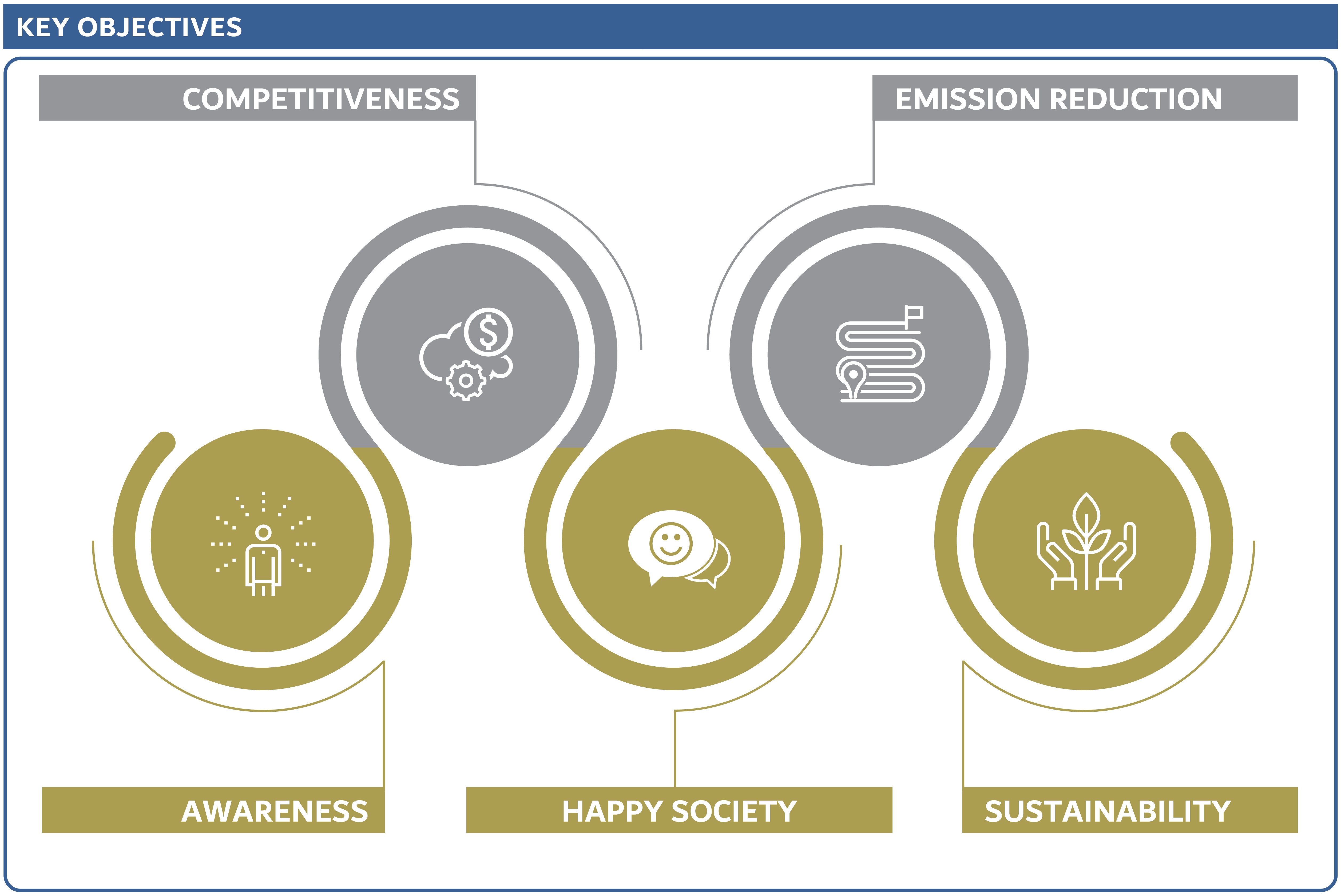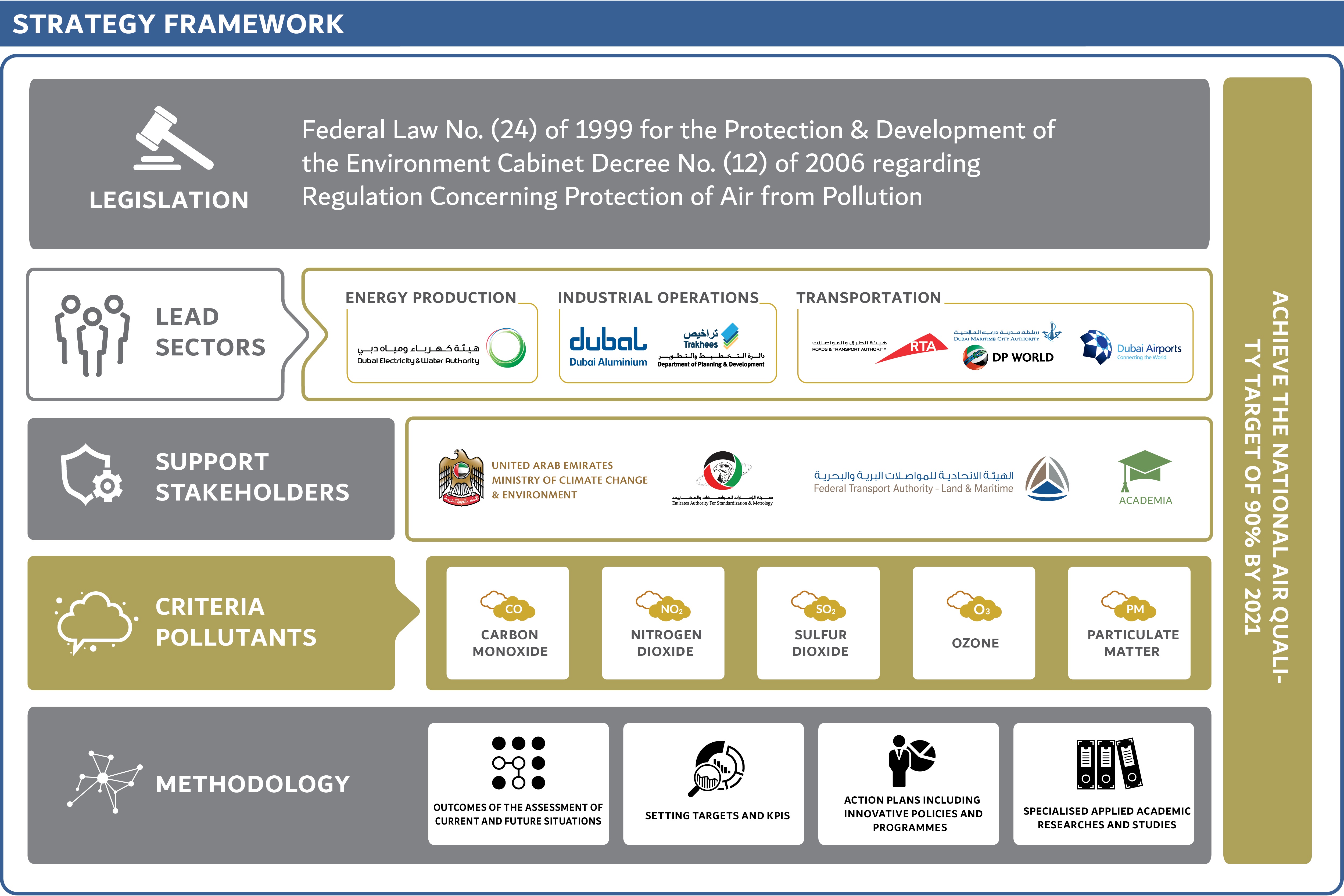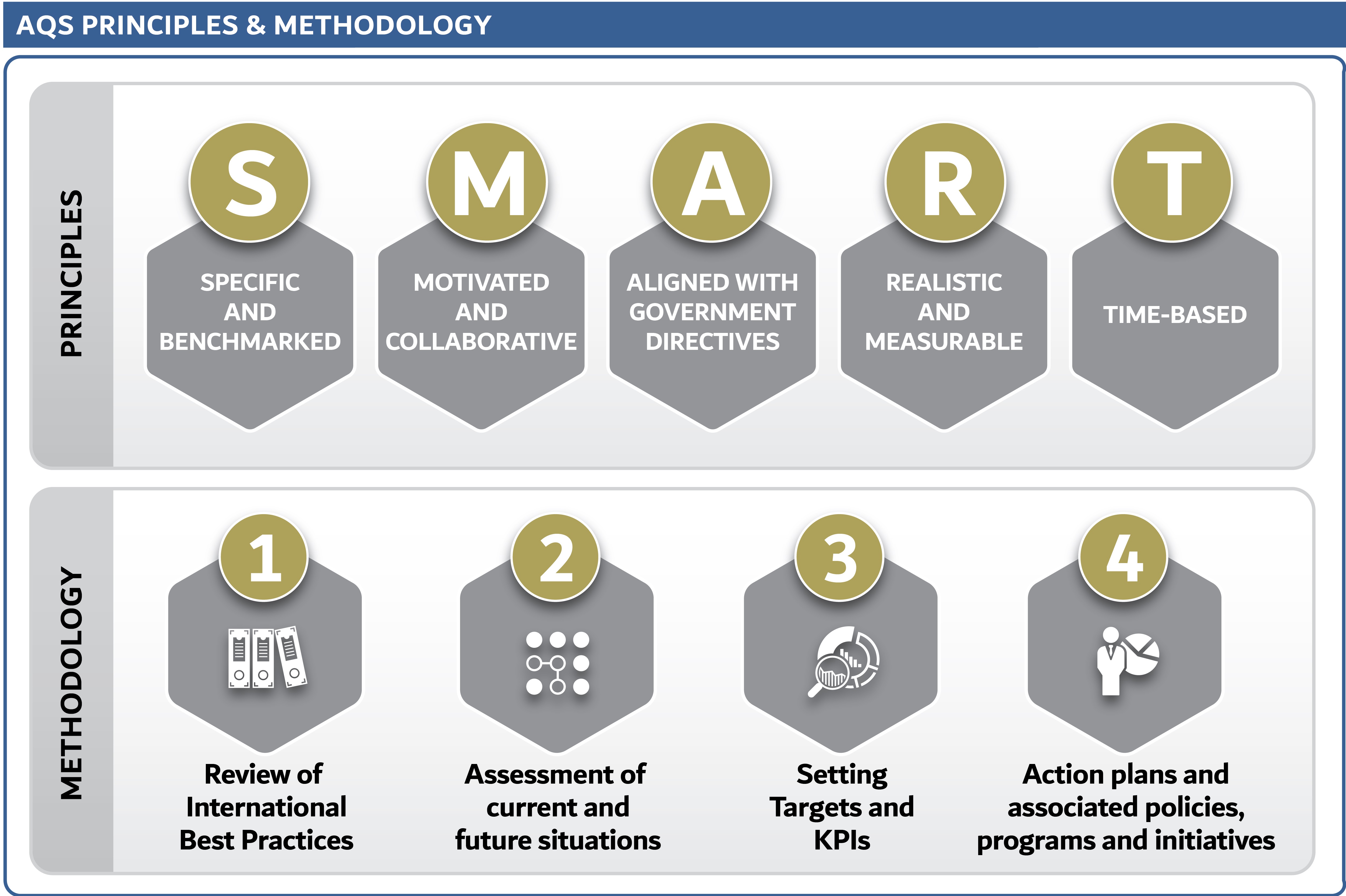Dubai Air Quality Strategy
In line with the strategic objectives of the UAE National Agenda and Dubai Plan 2021, and in coordination with the General Secretariat of the Executive Council, in 2017 Dubai Municipality launched the Air Quality Strategy 2017-2021 with the aim of achieving the strategic air quality target of 90% clean air days by 2021. The strategy implemented the annual emission reduction targets for all relevant sectors (energy production, industry, land, air and maritime transport), annual achievement assessments, and follow up on the implementation of the initiatives and projects supporting to success of the strategy and facilities' operational plans and strategic directions. The air quality strategy is a product of collaboration between the public and private sectors to reduce emissions of air pollutants, and is considered one of the main pillars in the development of urban planning of the city. The air quality strategy succeeded in achieving the positive results during the period between 2017 and 2021. The targets were exceeded during all years of the strategy's implementation, which reflects the efforts of all sectors towards achieving the required goal. During its implementation, the strategy has achieved an average annual reduction of 30% compared to the business as usual scenario. Dubai Municipality intends to launch the Air Quality Strategy 2030, as part of its efforts aimed at consolidating Dubai's position as one of the world's best cities in air quality.
KEY STRATEGIC OBJECTIVES
The Air Quality Strategy was initiated with an ultimate aim of reducing air emissions and achieving the national air quality target of 90% clean air days by 2021. The strategy has received a substantial support and collaboration from the concerned stakeholders. The targets of the strategy supported sustainable development in the Emirate, and promoted competitiveness by strengthening the national competitive profile aligned with the global goals and directions in the air quality sector. The Air Quality Strategy, furthermore, promoted application of international best practices to improve air quality in the emirate, with the ultimate goal to increase happiness of its residents and visitors, and enhance the Emirate's position in the global air quality ratings.
Strategy Framework
To ensure the successful implementation of the Dubai Air Quality Strategy, a practical and comprehensive framework was developed to define the applicable legislations and strategic and supportive partners from various sectors in the Emirate. The framework also adopted a well-established methodology based on international best practices, and future emission scenarios, including the identification of the main air pollutants and the annual reduction targets required by all concerned sectors. Annually the strategy's performance and implementation of emission reductions initiatives by all sectors were evaluated.
Methodology & Principles
The Air Quality Strategy was developed following European emission methodologies and best international scientific practices. In 2019, the strategy was awarded a certificate of conformity by the accredited environmental research group at King's College London for following the European emission methodologies and best international scientific practices in assessment of emission inventory, emission forecasting and development of emission targets. The methodology included a detailed quantitative and qualitative assessment of current and future scenarios of air pollutants generated from all relevant sectors (energy production, industry, land, air and marine transport), and it considered the sectoral plans, programs and initiatives to reduce emissions and lead to achievement of strategic objectives. Furthermore, the Air Quality Strategy was based on a set smart principles fulfilling the needs of air quality challenges within the Emirate of Dubai, which included specific and clear objectives in line with national policies and trends, and international standards, and key performance indicators to ensure the achievement of ambitious reduction rates. The strategy also featured dynamic and specific timelines catered for implementing effective and innovative action plans up to year 2021.



